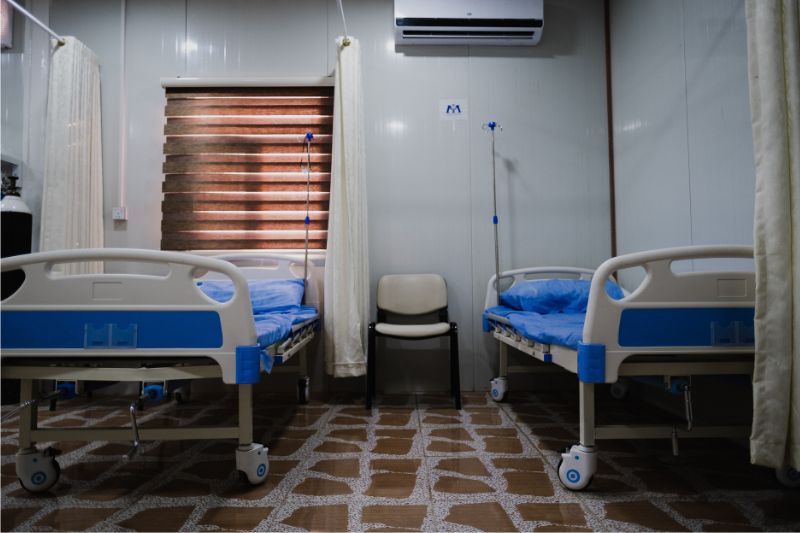No products in the cart.
What Is Medicare and How Does it Work

Medicare is a federally operated insurance plan that pays for seniors’ health care costs. It is the primary payer for people with low incomes and limited assets, including the majority of retired people. Medicare pays for inpatient and outpatient hospital care, physician services, skilled nursing facility services, hospice care, home health care, and other medical expenses. It also covers prescription medications and preventive services.
People who are retired and have health insurance through their former employers may be eligible for Medicare as soon as they become 65 years of age.
How Does Medicare Work
The Centers administer the Medicare program for Medicare & Medicaid Services, which also oversees the Medicare Prescription Drug program.
Your eligibility for Medicare depends on several factors, such as your age, whether or not you already have health insurance, and your income level. The amount of coverage a person has is determined by factors such as if that person qualifies for additional coverage through military service or secondary insurance plans.
Medicare benefits are organized into four main parts: Part A, Part B, Part D, and Part C . These sections are created to provide seniors with various types of assistance depending on their needs and financial situation. The cost of Medicare also differs based on which plan is chosen.
Part A
It covers inpatient hospital care, skilled nursing facility care, hospice care, and home health services. It also pays for medical equipment such as wheelchairs, hospital beds, and pacemakers. It does not pay for most doctors’ services or prescription medications.
Part B
It is a voluntary insurance program that includes comprehensive medical coverage for physicians and other outpatient services. It also covers some inpatient and outpatient hospital care, including the medications prescribed while in the hospital. It is optional and is available to individuals eligible for Medicare through their former employers. It also may be available to low-income retirees under age 65.
Part C
A Medicare Advantage plan allows the enrollee to stay with Medicare while receiving the same insurance coverage as the private sector and paying a monthly premium. It is available to individuals eligible for Medicare through their former employers or low-income retirees under age 65. It is also open to anyone who is unsuitable for Parts A and B of Medicare but wants the same benefits provided through traditional Medicare.
Part D
It provides prescription drug coverage for people with Medicare Part A or B who have high drug costs or a high risk of severe medical conditions. While it is initially intended to help Part D participants, it has come under fire by some critics because the program adds costs to the system when hundreds of thousands of people enroll because they do not realize how much their fees will be.
Medicare for those enrolled in managed care, Medicare Advantage, Medicaid, and prescription drug coverage under Medicare Part D have the same essential benefits but differ in minor ways. In addition, these programs also have their eligibility requirements, which must be met when enrolling in them.
The majority of people covered by Medicare receive their coverage through Part A. From there, people with the greatest need can then choose to enroll in either Part B or Part D.
The number of people covered by Medicare has been increasing. This growth was driven by an increase in baby boomer retirees who entered seemingly old age between 2009 and 2012.
As of 2010, Medicare’s spending on prescription drugs was four times that of its traditional medical services. In 2017, the cost of Medicare Part D was approximately $69 billion.
In 2010, Medicare had a $15 billion deficit in its drug plans. Furthermore, it is estimated that the program will pay an additional $154 billion by 2020 to subsidize seniors’ drug costs.
The Social Security Administration estimates that more than two-thirds of retirees live in poverty after leaving their jobs. Social Security benefits provide a meager allowance to 57 percent of retired seniors as a portion of their total income.
A study conducted in 2015 found that only 25 percent of women and 18 percent of men who participated in a nonpartisan survey were not living below the federal poverty level during their time as retirees.
In 2016, the median retiree received $1,080 per month less than they did in 2007. At the same time, healthcare costs rose by a total of 10 percent over this same period. By 2020, it was estimated that seniors would be required to pay $11 billion more for prescription drugs under Part D than in 2009. These additional costs are primarily driven by an increase in drug claims for both generic and brand-name medications.
Medicare is a vital program for retirees. Over the past several years, this program has increased in cost while providing essential coverage and health care benefits to millions of seniors. It is vital to those over 50 years old and with small amounts of private health insurance. It’s one of the largest players in the United States. However, many individuals eligible for Medicare do not make use of it because they don’t know how they can qualify or don’t realize that it is there to help them with their medical needs if they find themselves suddenly uninsured after retirement. It is then followed by coverage for medical equipment such as wheelchairs, hospital beds, and pacemakers. The program also covers other forms of medical treatment, such as lab tests, preventive services, diagnostic scans, and x-rays. The standard Medicare Part A coverage plan covers all of these services. It is one of the many benefits seniors can use to help themselves if they have no other options.

















Leave a Reply